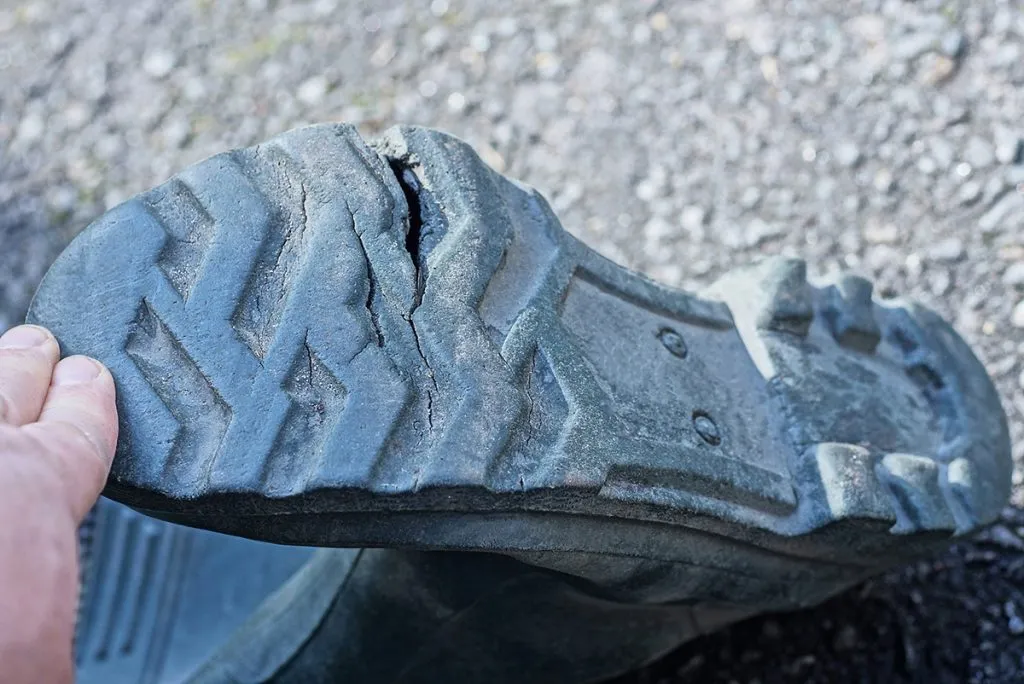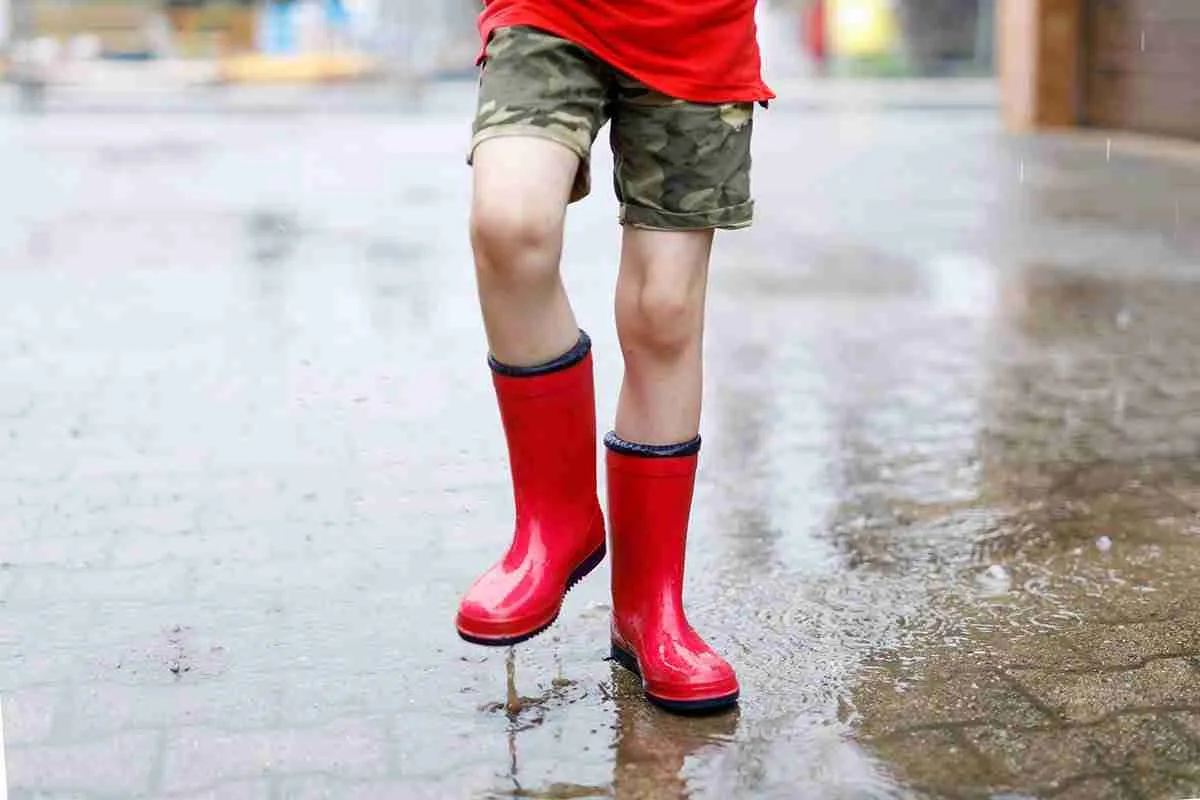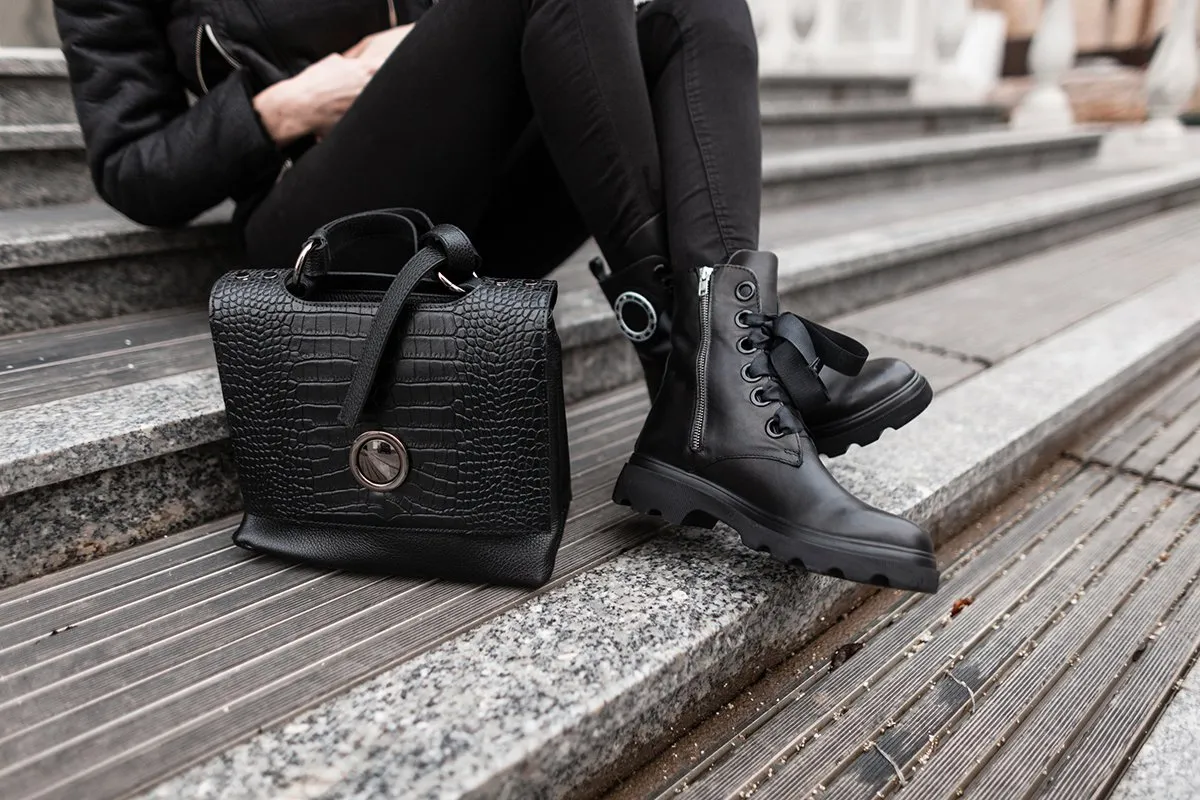Rubber boots are the perfect type of boot to wear in heavy rainfall and muddy terrain. However, exposure to these destructive environments makes rubber susceptible to cracks. So, how do you protect rubber boots from cracking?
Here are 5 essential ways to keep your rubber boots from cracking:
- Condition your rubber boots regularly.
- Keep your rubber boots clean.
- Don’t store rubber boots in direct sunlight.
- Never use heat to dry rubber boots.
- Keep your rubber boots in a temperature-controlled area.
This article will go over the strategies mentioned above in more detail so that you can stop your rubber boots from leaking and cracking.
1. Condition Your Rubber Boots Regularly
All of us know the importance of keeping leather boots conditioned.
But rubber boots require the same level of special care, too. Just like genuine leather, natural rubber is very susceptible to cracks.
The cracks happen as a result of the rubber drying out over time.
The method for conditioning rubber boots is the same as with leather shoes. You’ll need to apply a dab of rubber conditioner on a sponge or dry towel and massage it slowly into the boot’s surface.
If your rubber boots are covered in white residue, conditioning will buff it all out. The white marks are actually tiny rubber particles, and the appearance of these particles on your boots is called blooming.
It’s normal to see some blooming on your rubber boots. However, a lot of residue indicates that you haven’t conditioned the shoes for a long time.
If you don’t have a rubber conditioner, get the Gear Aid Revivex Rubber Boot Treatment. It has a sponge built into the bottle for easier application. Furthermore, it’ll make your boots more resistant to water and dirt.
If you wear your rubber boots often, condition them between once a week to once a month, depending on how much you use them. Apply some conditioner every 2 months if you’re storing the boots.
Note: Never use household stuff like petroleum jelly and wax on your rubber boots. Mixing oils and rubber causes a complex chemical reaction. Oil dissolves and damages rubber materials.
2. Keep Your Rubber Boots Clean
Rubber is very resistant to mud and dirt. However, if you allow dirt to build up and dry on your rubber boots every day, cracks will eventually form.

As the water from mud evaporates, it dries out the shoe’s surface. And if your boots have a glossy finish on them, dirt and grime will destroy the lacquer completely.
If you work on cars or machinery, drops of grease can get onto the boot’s surface. As I explained earlier, this is a death sentence for rubber. So, keep your rubber boots dirt and oil-free at all times.
Run the boots under some tap water and scrub the dirt off with a soft brush. It’s more than enough to get them squeaky clean.
If you have an oily stain, you may need to use a bit of soap to get rid of it. Use mild hand soap because laundry detergent and dishwashing liquid are too harsh.
And while white vinegar is perfect for getting stains out of your carpet, don’t use it on rubber vinegar causes rubber to disintegrate.
3. Don’t Store Rubber Boots in Direct Sunlight
Sunlight is damaging to most materials, and rubber is no exception.

Harmful ultraviolet (UV) rays break down molecule chains in both synthetic and natural rubber. UV exposure can cause visible cracks on rubber boots in a matter of weeks.
If you can’t avoid wearing rubber boots on a sunny day, you can protect the boots when storing them. Keep them in a dry spot in your garage or closet. You should do this for all footwear you care about.
4. Never Use Heat To Dry Rubber Boots
Exposure to heat can dry out the surface of your rubber boots the same way that dirt can. This is another reason not to dry your boots in direct sunlight.
Keeping your rubber boots close to a heat source also causes the material to expand and weakens it over time. Rubber gets thinner and weaker from heat exposure. On top of that, it dries out the material like crazy, causing it to deform and crack.
So, you should never store your rubber boots on top of radiators, near space heaters, the fireplace, etc.
Instead, wipe the boots down with a dry cloth. Allow them to air dry completely before wearing them again.
If the liner is wet, fill the boot with crumpled newspaper or printer paper. The paper will absorb moisture more quickly than air, allowing the boots to dry in no time.
5. Keep Your Rubber Boots in a Temperature-Controlled Area
Heat exposure alone can cause cracks on rubber boots. However, cooling the boots immediately afterward can also cause them to shrink rapidly, which can cause additional cracks to form.
The key to preventing that is to keep your rubber boots in a place that has a stable room temperature.
The garage is a great place to store your work boots along with other equipment. You can also keep them in your closet, provided you have enough space.
How To Fix Cracks in Rubber Boots
If you happen to have a few cracks or holes in your rubber boots, fret not.
Unlike leather, rubber is easy to work with. You don’t have to visit your local shoe repair shop – you can fix minor cracks yourself.
You’ll only need some sandpaper and Shoe Goo Shoe Repair and Protective Coating. The goo will fill the crack completely, no matter how large it is.
Here are the steps on how to fix a crack in your rubber boots:
- Clean the crack and surrounding area with a wet towel and air dry.
- Apply a thin layer of Shoe Goo over the crack and spread evenly.
- Allow Shoe Goo to cure completely overnight.
- Apply masking tape around the crack to protect the rubber from sandpaper.
- Use fine-grit sandpaper to buff out any imperfections.
- (Optional) Use acrylic paint to hide Shoe Goo.
Key Takeaways
A rugged, well-maintained pair of rubber shoes can last a decade. However, lack of care and improper storage can age the pair prematurely.
To ensure your boots stay crack-free, keep them clean, condition them regularly, and store them away from heat.
What To Read Next:







